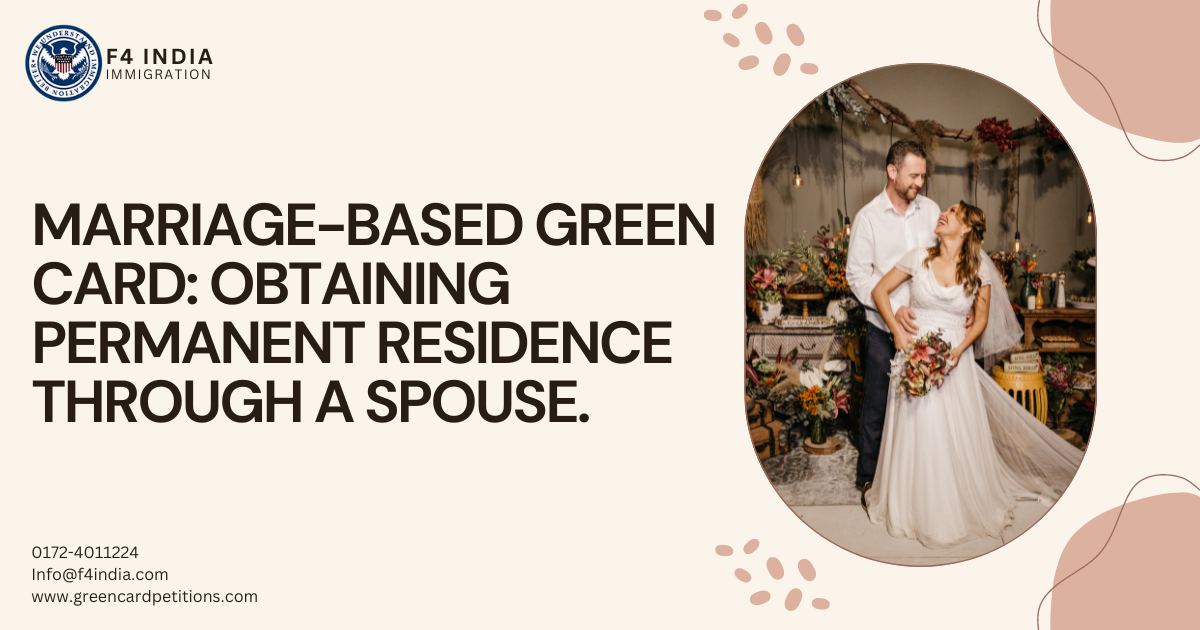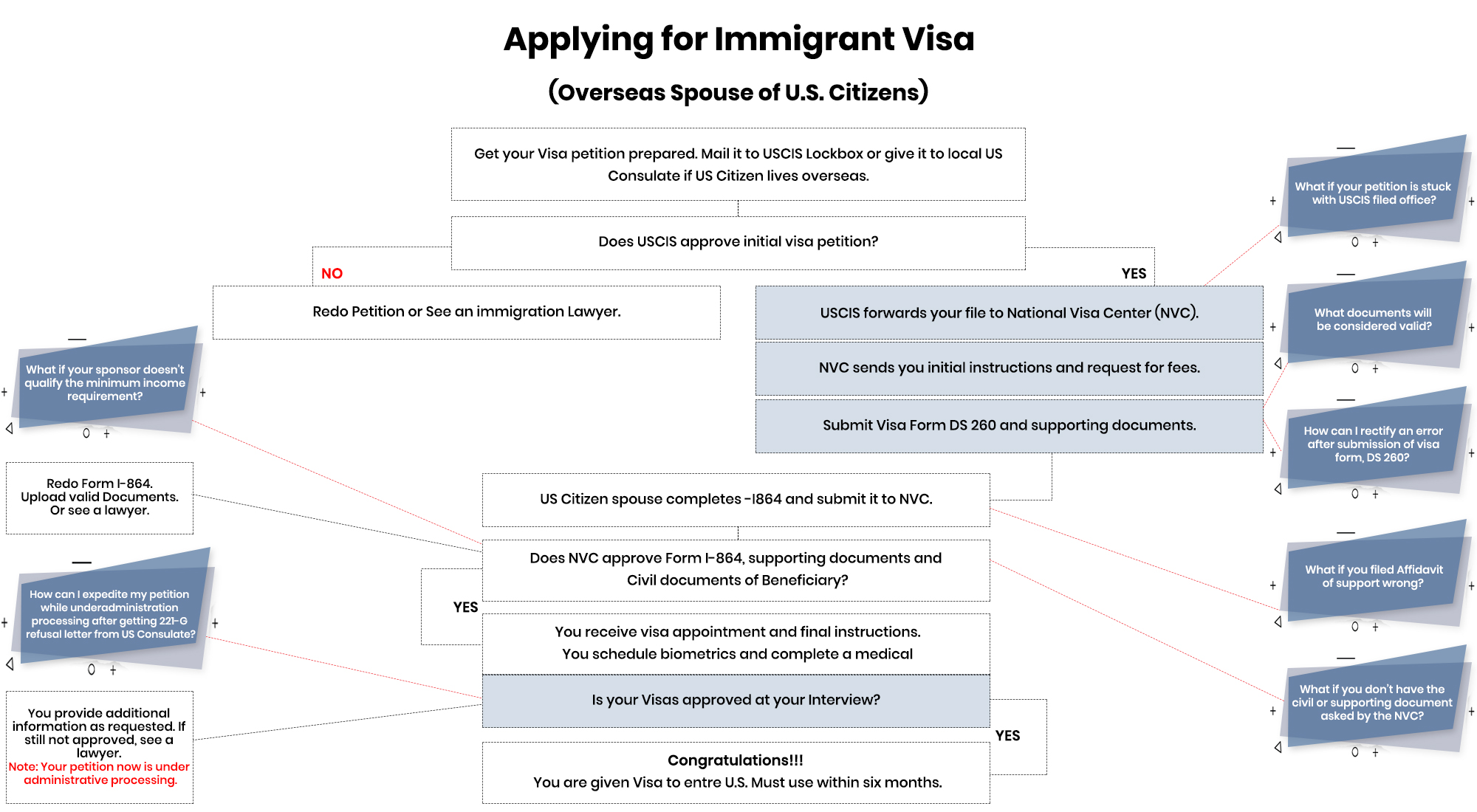Marriage-Based Green Card: Obtaining Permanent Residence through a Spouse.

Marriage green card is a common phrase used to describe a permanent resident card obtained through marriage to a U.S. citizen or lawful permanent resident. Permanent residence is an immigration status that allows a foreign national to live and work in the United States permanently. Generally, the permanent resident may also choose to naturalize as a U.S. citizen once eligible.
A marriage-based green card can be one of the quickest ways to obtain permanent residence. The marriage alone doesn’t provide any immigration status to a foreign national. But marriage to a U.S. citizen or permanent resident is a qualifying relationship for a foreign national to apply for immigration benefits like a green card.
Marriage Green Card through Adjustment of Status
Certain individuals who are already inside the United States may be able to apply for the marriage green card without leaving. Adjustment of status is the process of applying for permanent residence from within the United States. However, this benefit is only available to those who have an immigrant visa immediately available to them. The spouse of a U.S. citizen always has a visa available. That’s because they are in the immediate relative category. At the time of writing this article, spouses of permanent residents are a current category. Therefore, they also have an immigrant visa immediately available. However, this could change in the future if the visa backlog grows.
Eligibility to Adjust Status as a Spouse
In order to adjust status to permanent resident, a spouse must generally meet all of the following requirements:
- Lawful marriage (from any country) to the U.S. citizen petitioner;
- An immigrant visa is immediately available (always available for the spouse of U.S. citizen); and
- Lawful entry to the U.S.
The couple must be legally married, and neither spouse can be married to someone else at the same time. This must be a bona fide marriage. In other words, it must not be a fake marriage entered into for the purposes of gaining immigration benefits. This is discussed in more detail below.
Filing an Adjustment of Status Application
An adjustment of status application is really a package of multiple forms and supporting documents that the applicant files with U.S. Citizenship and Immigration Services (USCIS). The principal application is Form I-485, Application to Register Permanent Residence or Adjust Status. An adjustment of status package for a marriage green card will generally include the following USCIS forms:
- I-485, Application to Register Permanent Residence or Adjust Status
- I-130, Petition for Alien Relative
- I-130A, Supplemental Information for Spouse Beneficiary
- I-864, Affidavit of Support
- I-693, Report of Medical Examination and Vaccination Record
- I-765, Application for Employment Authorization (optional)
- I-131, Application for Travel Document (optional)
The complete adjustment of status package will also include several supporting documents as required by each USCIS form. This list is dependent on the answers you provide on the application. For instructions on supporting documents, please refer to the USCIS website for each form or refer to the customized filing instructions that Citizen Path provides with your preparation of the application.
Adjustment of Status Interview
Not all adjustment of status applicants are required to attend an interview, but marriage-based applicants will always have an interview. If you have a bona fide marriage and otherwise are not inadmissible to the United States, you should find the adjustment of status interview a simple matter. In most cases the interview takes less than 30 minutes and results in a decision on your green card.
Marriage Green Card through Consular Processing
Applicants who cannot adjust status as described above will apply for permanent residence through consular processing. This is the process of applying for a green card outside the United States. It’s the more common path for most immigrants.
Petitioning a Spouse
The consular processing path begins with the U.S. citizen or permanent resident filing a petition with USCIS. A marriage-based petition will generally include the following forms:
- I-130, Petition for Alien Relative
- I-130A, Supplemental Information for Spouse Beneficiary
Again, USCIS will require the petitioner to submit several supporting documents as well. Refer to the USCIS website or Citizen Path’s custom filing instructions for details. Citizen Path can also help you through consular processing. Prepare Forms I-130 and I-130A quickly and affordably through our web-based service.
Once USCIS approves the I-130 petition, they will forward it to the National Visa Center. If an immigrant visa is available, the NVC will begin scheduling the consular process. (Remember, there’s always an immigrant visa available to the spouses of U.S. citizens.) For spouses of permanent residents, the case may reside with the NVC for several months while waiting for the visa to become available.
Before a consular interview can happen, the NVC will ask the foreign spouse to submit the immigrant visa application (DS-260) and submit several supporting documents like the Form I-864, Affidavit of Support. Additionally, there will be processing fees for the visa application and affidavit of support. See what happens after filing the petition in the I-130 time line.
Consular Interview
In most cases, the interview will be a U.S. embassy or consulate office. The U.S. petitioner is never required to attend the interview but can act as a supportive participant in many cases. Consular interviews are also generally under 30 minutes and will result in an immigrant visa once approved. For an overview of possible questions and what to take to your consular interview for a marriage green card, read Green Card Interview Questions for Spouses.
Adjustment versus Consular Processing
Very few people have a choice between adjustment of status and consular processing. However, some spouses of U.S. citizens that are present in the United States do have this choice. In most cases, spouses who are eligible to adjust status prefer to do so. It allows the foreign spouse to stay in the United States while waiting for the marriage green card. On the other hand, consular processing can often result in quicker processing times. The trade off is that the couple may be separated. Each path has its own advantages and disadvantages. For a detailed breakdown read Adjustment of Status vs Consular Processing.
Grounds of Inadmissibility
Every green card applicant is checked for inadmissibility before entering the United States. If the applicant is already physically present in the U.S., he or she is still checked for inadmissibility before being admitted as a permanent resident. Individuals with a history of criminal or terrorist activities, drug abuse, infectious medical problems, or certain other characteristics will generally not be allowed to enter the U.S.
Bona Fide Marriage
A marriage-based green card is one of the quickest paths to becoming a permanent resident in the United States. Because of this, the marriage green card process has been prone to fraud by certain individuals that fake a marriage in order to gain immigration benefits. Therefore, getting a green card through marriage is closely scrutinized by USCIS. As a part of the application process, you’ll need to prove that you have a real, bona fide marriage.
Undocumented Spouses
Many undocumented spouses are able to obtain permanent residence through marriage. In many cases, the undocumented spouses of U.S. citizens can adjust status on their own. However, there are two very important pre-requisites. The applicant must be the spouse of a U.S. citizen and generally must have a lawful entry. Undocumented spouses of permanent residents or individuals that do not have a lawful entry should seek the assistance of an immigration attorney.
The foreign spouse’s admission to the United States is a significant factor. In order to adjust status, the undocumented spouse will need to prove that he or she had a lawful entry to the United States.
- When should a humanitarian reinstatement request be made?
- Do Not Lose Hope If Your Petitioner Or Primary Applicant Passes Away; You Still Have A Chance To Move To The US?
- F4 Visa - Family Based Immigration For Siblings Of US Citizens?
- After Marrying A US Citizen, How Long Does It Take To Get A Green Card?
- NVC Welcome Letter to Documentary Qualified?
- Importance of Retaining an Immigration Attorney for the DS-260 after getting the welcome letter?
- I married a U.S. Citizen while in the United States on a temporary visa. What do i need to do next to obtain a green card?
- I received a notice to appear (NTA) for a removal hearing. So how do i fight it?
- I was denied a visa. Is it possible to get a visa waiver?
- What is the difference between citizenship and naturalization?

